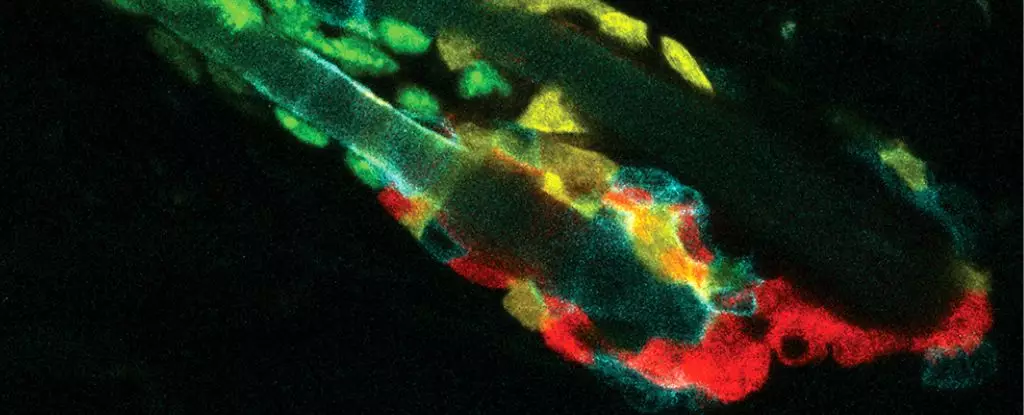The inner workings of our bodies are a complex network of systems and processes, with each cell playing its role in maintaining health and vitality. Among these processes is an astonishing phenomenon that occurs millions of times every minute: cell death. As cells die—whether through natural causes or due to external damage—one fundamental question arises: how does the body manage the aftermath? A recent study has unveiled an unexpected strategy employed by living stem cells: a form of cellular cannibalism where neighboring cells consume their deceased counterparts, a process that is not only efficient but potentially crucial for maintaining tissue integrity.
Researchers from The Rockefeller University have undertaken a novel investigation into how mammalian cells handle cellular waste, particularly focusing on hair follicle stem cells (HFSCs) in aging mice. The revelation that dying stem cells are swiftly consumed by nearby living cells adds a fascinating layer to our understanding of cellular dynamics. This process occurs before immune responses, such as those orchestrated by macrophages, can intervene. In essence, stem cells not only take on the responsibility of proliferation and maintenance but are also the first responders to their own mortality.
Katherine Stewart, a cellular biologist leading the research, noted that this mechanism helps to prevent unregulated inflammation that could arise from immune cells overreacting to the death of stem cells. “The hair follicle stem cells act as a barrier against excessive immune responses,” Stewart asserts, emphasizing the importance of this intratissue communication.
The intricacies of the cellular cleanup process are remarkable, involving two specific receptors within HFSCs that serve critical roles. One receptor detects a lipid signal emitted by dying cells, essentially calling out for help, while the other recognizes a growth-promoting retinoic acid from nearby healthy cells. This dual signaling system acts like an on-and-off switch, allowing stem cells to decipher when to begin the cannibalistic process of consumption.
When a cell dies, the immediate biochemical signals prompt neighboring stem cells to engage in this cleanup operation. However, once the dead cells are removed, the signals cease, allowing HFSCs to refocus on their primary responsibility: sustaining the health and regeneration of hair follicles. This exquisite choreography reflects nature’s efficiency—clear out the dead before inflammation disrupts the balance.
This process of cellular cannibalism raises intriguing questions about its potential applications across different tissues. The researchers theorize that similar mechanisms may exist elsewhere in the mammalian body, providing a robust framework for understanding how cellular death is managed universally. If validated, this concept could have significant implications for regenerative medicine and treatments for various degenerative diseases, where cellular turnover is disrupted.
Furthermore, the efficiency with which HFSCs can consume their dying brethren—an estimate of up to six cells devoured per stem cell—underscores the versatility and resilience of somatic cells. This cellular recycling process not only conserves resources but also reinforces the need for ongoing research into how such mechanisms might be harnessed to enhance tissue repair or improve responses to injury and disease.
The study shedding light on the cannibalistic behaviors of hair follicle stem cells presents a vivid portrayal of how living systems have evolved to manage the inevitability of cell death. Not only does this phenomenon illuminate the sophisticated nature of cellular communication and response, but it also emphasizes the evolutionary advantages of self-maintenance and repair.
As researchers continue to probe the complexities of cellular life, much remains to be explored regarding the contexts in which these mechanisms operate and their relevance to health and disease. Understanding this interplay of life, death, and renewal at the cellular level could significantly impact future developments in biological research and clinical practice, potentially leading to breakthroughs that transform our approach to healing and regeneration. As science advances, the fascinating dance of cellular life promises both depth and discovery.

Leave a Reply